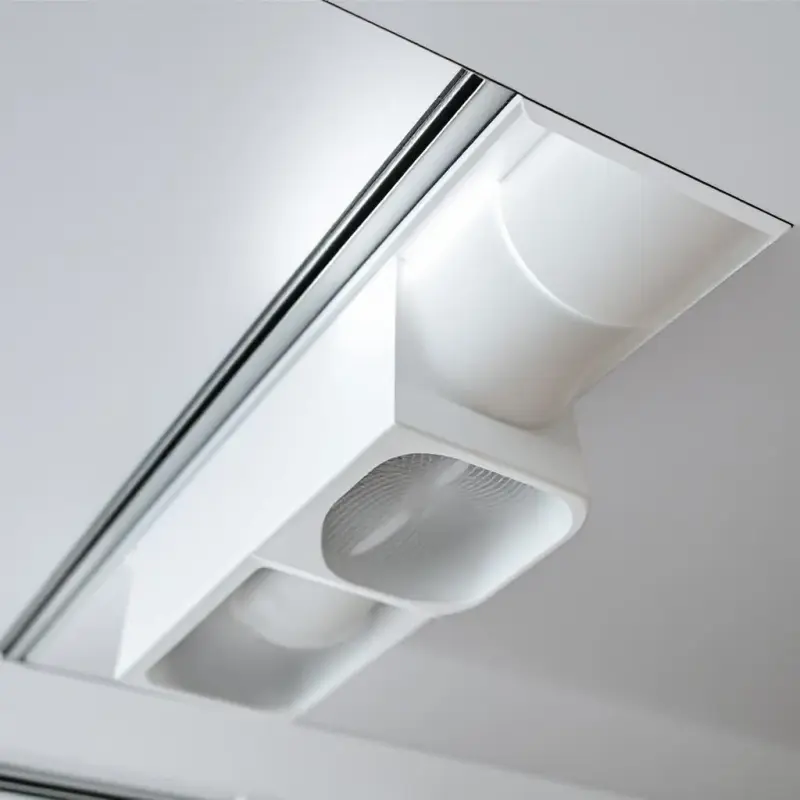Innovative Ventilation Technologies in Large Shopping Centers: Enhancing Resource Efficiency
In the dynamic environment of large shopping centers, maintaining optimal air quality and thermal comfort is essential. Traditional ventilation systems often operate at fixed capacities, leading to energy inefficiencies, especially during periods of low occupancy. Recent technological advancements have introduced innovative solutions that not only enhance indoor air quality but also significantly reduce energy consumption.

Demand-Controlled Ventilation (DCV)
DCV systems adjust the volume of outdoor air supplied to a space based on real-time occupancy and indoor air quality measurements. By monitoring parameters such as carbon dioxide (CO₂) levels, these systems modulate airflow to meet the specific needs of the environment. This approach ensures sufficient ventilation during peak occupancy and reduces energy usage during off-peak times. Implementing DCV can lead to substantial energy savings and improved indoor air quality.
Variable Air Volume (VAV) Systems
VAV systems regulate the amount of air delivered to different zones within a building, adjusting airflow based on the specific requirements of each area. This flexibility allows for precise control of temperature and humidity, enhancing occupant comfort while optimizing energy use. By tailoring ventilation to the actual demand, VAV systems contribute to significant resource conservation.
Energy Recovery Ventilation (ERV) Systems
ERV systems capture energy from exhaust air and transfer it to incoming fresh air, reducing the energy required to heat or cool the building. This process not only improves energy efficiency but also maintains consistent indoor air quality. By recovering thermal energy, ERV systems minimize the load on heating and cooling systems, leading to lower operational costs.
Smart Building Integration
Integrating ventilation systems with building automation systems (BAS) enables centralized control and monitoring. Sensors and smart controls adjust ventilation parameters in real-time, responding to changes in occupancy, outdoor air quality, and internal conditions. This integration ensures optimal performance and energy efficiency, aligning ventilation operations with the building's overall energy management strategy.
Benefits of Advanced Ventilation Technologies
-
Energy Efficiency: By adjusting ventilation based on actual demand, these systems reduce unnecessary energy consumption, leading to lower operational costs.
-
Improved Air Quality: Continuous monitoring and adjustment ensure that indoor air quality meets health and comfort standards.
-
Resource Conservation: Optimized ventilation reduces the consumption of energy resources, contributing to environmental sustainability.
-
Cost Savings: Efficient systems lower energy bills and reduce the need for maintenance, offering long-term financial benefits.
Advanced Monitoring and Control Systems
In addition to the technologies mentioned above, advanced monitoring and control systems play a crucial role in optimizing ventilation in large shopping centers. These systems use a combination of sensors and real-time data analytics to continuously assess environmental conditions. Sensors measure parameters such as temperature, humidity, CO₂ levels, and airflow, providing valuable insights into the building's ventilation needs. By processing this data, these systems can make dynamic adjustments, ensuring that ventilation is neither excessive nor insufficient, further contributing to energy savings.
For instance, integrating IoT (Internet of Things) technology into ventilation systems allows for remote monitoring and control. Building managers can access data from anywhere, making it easier to identify issues and optimize performance without needing to be on-site. Predictive analytics can also forecast potential issues based on historical data, enabling proactive maintenance before a system failure occurs, reducing downtime and avoiding costly repairs.
Sustainability and Environmental Impact
With increasing global attention on sustainability, shopping centers are under growing pressure to reduce their environmental footprint. The implementation of energy-efficient ventilation systems directly contributes to this goal. By reducing the overall energy consumption, these systems help lower greenhouse gas emissions, contributing to a cleaner, more sustainable environment.
Moreover, these systems can be integrated with renewable energy sources such as solar or wind power. For example, in some regions, shopping centers are investing in rooftop solar panels that provide energy to power the building's HVAC and ventilation systems. Combining renewable energy with advanced ventilation technologies not only decreases reliance on fossil fuels but also sets an example for other commercial buildings striving to minimize their ecological impact.
Future Trends in Ventilation Technology
Looking forward, the future of ventilation in large shopping centers is set to be shaped by several emerging trends. Artificial intelligence (AI) and machine learning are expected to play an increasingly prominent role. AI-powered systems can predict airflow patterns, optimize energy use, and improve air quality management. Over time, these systems will become more autonomous, requiring less human intervention while still delivering optimal performance.
Furthermore, the integration of ventilation systems with smart city infrastructure could allow buildings to communicate with each other and share energy resources. In this interconnected ecosystem, multiple shopping centers could work together to balance energy consumption and reduce overall demand during peak times.
In conclusion, the evolution of ventilation technologies presents exciting possibilities for improving energy efficiency, air quality, and sustainability in large shopping centers. By adopting these cutting-edge solutions, shopping centers can create more comfortable and healthier environments for customers while simultaneously reducing operational costs and environmental impact.
Articles
Opt-in for our updates to receive the latest and most fascinating articles right in your inbox.